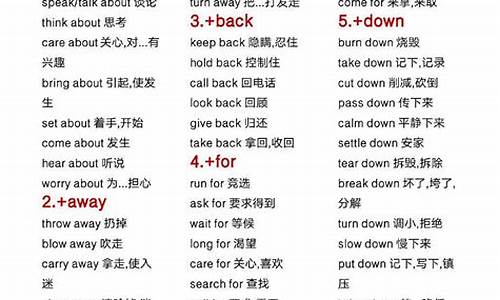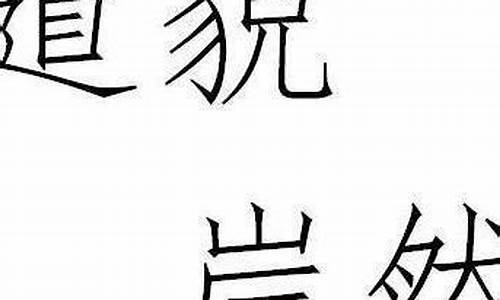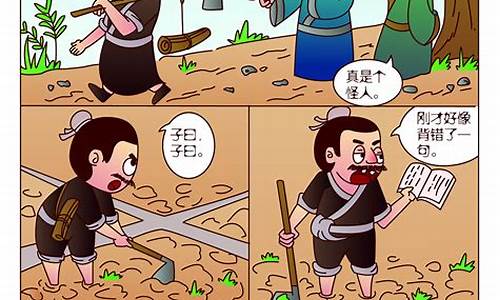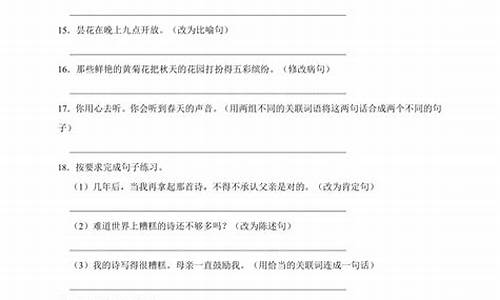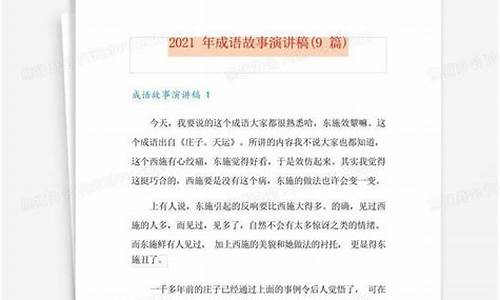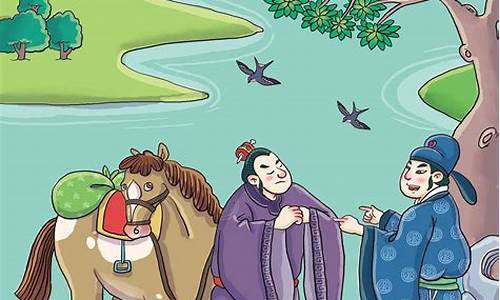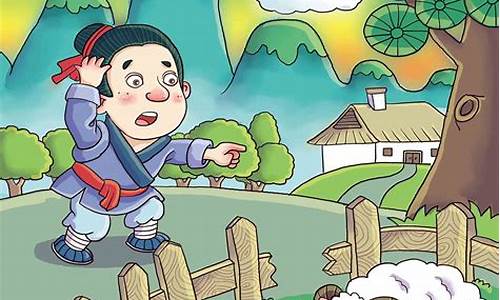accordion怎么读英语_accordion
1.求有关手风琴或巴扬的英文文章
2.手风琴是起源什么地方的?
3.以a开头的初中英语单词,要含意思。
4.请介绍一下手风琴
5.英语中有些名词加上后缀可以变成另一个名词(指人)试试看

关于乐器的英语单词有:
1、Guitar:吉他。英 [gtɑ:(r)],美 [ɡtɑr]。作名词的时候翻译为吉他、六弦琴。
如下图:The guitarist is playing the guitar. 这个吉他手在弹吉他。
2、Drum:鼓。英 [dr?m],美 [dr?m]。作名词的时候翻译为鼓、鼓声、鼓状物、石首鱼。
3、Piano:钢琴。英 [pin],美 [pino?]。作名词的时候翻译为钢琴、轻奏乐段。
4、Violin:小提琴。英 [?va?l?n],美 [?va?l?n]。作名词的时候翻译为小提琴、小提琴手。
5、Accordion:手风琴。英 [k?:di?n],美 [k?:rdi?n]。作名词的时候翻译为手风琴。
参考资料:
求有关手风琴或巴扬的英文文章
佰笛手风琴生产厂的****是02224370532。?
手风琴(accordion)是一种既能够独奏,又能伴奏的键盘乐器,不仅能够演奏单声部的优美旋律,还可以演奏多声部的乐曲,更可以如钢琴一样双手演奏丰富的和声。
手风琴声音宏大,音色变化丰富,手指与风箱的巧妙结合,能够演奏出多种不同风格的乐曲,这是许多乐器无法比拟的。
除了独立演奏外,也可参加重奏、合奏,可以说一架手风琴就是一个小型乐队。加之音高固定,易学易懂,体积小,携带方便,因此,手风琴很适合不同年龄的演奏者自娱自乐,也可以很方便地携带到学校、剧场参加演出。
1777年,中国器乐笙由意大利传教士阿莫依特神父传入欧洲,随即便在欧洲开始出现了一些手风琴的前身乐器,但它们大都未能成形便被淘汰了。真正用手拉的风琴是由德国人德里克·布斯曼在1821年制造了用口吹的奥拉琴,1822年又在琴上增加了手控风箱和键钮。
后来,奥地利人西里勒斯·德米安在布斯曼的基础上,集当时手风琴的各种前身乐器之大成,成功地改良创制了世界上第一架被定名为accordion的手风琴。直到2019年,世界各地仍然沿用accordion这个名称。
手风琴是起源什么地方的?
The accordion is a portable box-shaped musical instrument of the hand-held bellows-driven free-reed aerophone family, sometimes referred to as a squeezebox. A person who plays the accordion is called an accordionist.
It is played by compressing or expanding a bellows whilst pressing buttons or keys, causing valves, called pallets, to open, which allow air to flow across strips of brass or steel, called reeds, that vibrate to produce sound inside the body.
The instrument is sometimes considered a one-man-band as it needs no accompanying instrument. The performer normally plays the melody on buttons or keys on the right-hand manual, and the accompaniment — consisting of bass and pre-set chord buttons — on the left-hand manual.
The accordion is often used in folk music in Europe, North America and South America. It is commonly associated with busking. Some popular music acts also make use of the instrument. Additionally, the accordion is sometimes used in both solo and orchestra performances of classical music.
The oldest name for this group of instruments is actually harmonika, from the Greek harmonikos, meaning harmonic, musical. Today, native versions of the name accordion are more common. These names are a reference to the type of accordion patented by Cyrill Demian, which concerned “automatically coupled chords on the bass side”.
The accordion's basic form is believed to have been invented in Berlin in 1822 by Christian Friedrich Ludwig Buschmann, although one instrument has been recently discovered that appears to have been built in 1816 or earlier by Friedrich Lohner of Nürnberg in the German State of Bavaria.
The accordion is one of several European inventions of the early 19th century that used free reeds driven by a bellows. An instrument called accordion was first patented in 1829 by Cyrill Damian, of Armenian descent, in Vienna .
Demian's instrument bore little resemblance to modern instruments. It only had a left hand buttonboard, with the right hand simply operating the bellows. One key feature for which Demian sought the patent was the sounding of an entire chord by depressing one key. His instrument also could sound two different chords with the same key; one for each bellows direction (a bisonoric action).
At that time in Vienna, mouth harmonicas with Kanzellen (chambers) had already been available for many years, along with bigger instruments driven by hand bellows. The diatonic key arrangement was also already in use on mouth-blown instruments. Demian's patent thus covered an accompanying instrument: an accordion played with the left hand, opposite to the way that contemporary chromatic hand harmonicas were played, small and light enough for travelers to take with them and used to accompany singing. The patent also described instruments with both bass and treble sections, although Demian preferred the bass-only instrument owing to its cost and weight advantages.
The first pages in Adolph Müller's accordion book.The musician Adolph Müller described a great variety of instruments in his 1833 book, Schule für Accordion. At the time, Vienna and London had a close musical relationship, with musicians often performing in both cities in the same year, so it is possible that Wheatstone was aware of this type of instrument and may have used them to put his key-arrangement ideas into practice.
Jeune's flutina resembles Wheatstone's concertina in internal construction and tone color, but it appears to complement Demian's accordion functionally. The flutina is a one-sided bisonoric melody-only instrument whose keys are operated with the right hand while the bellows is operated with the left. When the two instruments are combined, the result is quite similar to diatonic button accordions still manufactured today.
Further innovations followed and continue to the present. Various buttonboard and keyboard systems have been developed, as well as voicings (the combination of multiple tones at different octaves), with mechanisms to switch between different voices during performance, and different methods of internal construction to improve tone, stability and durability.
The accordion appeared in popular music from the 1900s-1960s. This half century is often called the "Golden Age of the Accordion." Three players: Pietro Frosini, and the two brothers Count Guido Deiro and Pietro Deiro were major influences at this time.
Most Vaudeville theaters closed during the Great Depression, but accordionists during 1930s-1950s taught and performed for radio. During the 1950s through the 1980s the accordion received great exposure on television with performances by Myron Floren on the Lawrence Welk Show. In the late 1950s and early 1960s, the accordion declined in popularity.
In popular music, it is now generally considered exotic and old-fashioned to include the accordion, especially in music for advertisements. Some popular acts do use the instrument in their distinctive sounds. See the list of popular music acts that incorporate the accordion. In 1993, during their MTV Unplugged performance performance, Nirvana's Krist Novoselic used accordion while covering The Vaselines song Jesus Wants Me for a Sunbeam.
The New York band They Might Be Giants extensively use the accordion in many of their recordings, especially on earlier albums such as Apollo 18 (album).
Perhaps the most famous accordionist in popular music is "Weird Al" Yankovic, who has used the accordion in every album he has recorded, most extensively on his debut album.
Another great example would be the Irish-American band Flogging Molly. The group consists of 7 members, one of which being an accordionist (Matt Hensley).
Additionally, the Canadian indie-rock group Arcade Fire uses accordion in much of their music. It can distinctly be heard in the tracks "Neighborhood #2 Laika", "Wake up", and "No Cars Go" among many others. The former two can be found on the album entitled "Funeral" and the Latter on "Neon Bible".
Dr. Steel uses accordion in many of his songs, such as "Lullabye Bye" and "Bogeyman Boogie." Tom Waits used an accordion in his video for the song "Downtown Train" in 1985. On a Raffi concert video called "Raffi on Broadway", Connie Lebeau played this accordion in "De Colores" and a Raffi song called "Will I Ever Grow Up". Polka Floyd injects accordion into Pink Floyd music.
Use in classical music
Main article: Accordion music genres#Use in classical music
Although best known as a folk instrument, it has grown in popularity among classical composers. The earliest surviving concert piece is Thême varié très brillant pour accordéon methode Reisner, written in 1836 by Miss Louise Reisner of Paris. Other composers, including the Russian Piotr Ilyich Tchaikovsky, the Italian Umberto Giordano, and the American Charles Ives (1915), wrote works for the diatonic button accordion.
The first composer to write specifically for the chromatic accordion was Paul Hindemith. In 1922, the Austrian Alban Berg included an accordion in Wozzeck, Op. 7. Other notable composers have written for the accordion during the first half of the 20th century American composer William P. Perry featured the accordion in his orchestral suite "Six Title Themes in Search of a Movie" (2008). The avant experimental composer Howard Skempton began his musical career as an accordionist, and has written numerous solo works for it.
Brazil
The accordion is a traditional instrument in Brazil. Used in the style known as bai?o in the northeast. Luiz Gonzaga is known as the king of bai?o.
Use in heavy metal music
Accordionists in heavy metal make their most extensive appearances in the folk metal sub-genre, and are otherwise generally rare. Full-time accordionists in folk metal seem even rarer, but they are still utilized for studio work, as flexible keyboardists are usually more accessible for live performances.
Notably, the Finnish symphonic folk-metal band Turisas has always had a full-time accordionist, employing classical and polka-style sensibilities alongside a violinist. Another Finnish metal band, Korpiklaani, invokes a type of Finnish polka called humppa, and also has a full-time accordionist. Sarah Kiener, the former hurdy-gurdy player for the Swiss melodic-death/folk metal band Eluveitie, played a Helvetic accordion known as a zuger?rgeli, which could be a distant relative (in one way or another) to the Swiss schwyzer?rgeli, as both are indigenous to and very rare outside of Switzerland.
The lead vocalist for the pirate metal band Alestorm plays a keytar and often uses it to make accordion sounds.
The best accordions are always fully hand-made, especially in the aspect of reeds; completely hand-made reeds have a far better tonal quality than even the best automatically-manufactured reeds. Some accordions have been modified by individuals striving to bring a more pure sound out of low-end instruments, such as the ones improved by Yutaka Usui, a Japanese-born craftsman.
The manufacture of an accordion is only a partly automated process. In a sense, all accordions are handmade, since there is always some hand assembly of the small parts required. The general process involves making the individual parts, assembling the subsections, assembling the entire instrument, and final decorating and packaging.
以a开头的初中英语单词,要含意思。
手风琴属于活簧类乐器。它是借鉴中国笙簧发音原理而形成的。
十八世纪下半叶,中国笙传入欧洲,随即便在欧洲开始出现了一些手风琴的前身乐器,但它们大都未能成形便被淘汰了。真正用手拉的风琴是由德国人布期曼(Friedrdch Buschman,1805—1864 )在一八二二年创制的,后经奥地利人德米安(cyrillus Demian 1772—1847)在布斯曼琴的基础上,集当时手风琴的各种前身乐器之大成,成功地改良创制了世界上第一架被定名为Accordion的手风琴。直到今天,在欧洲和美洲仍然沿用Accordion这个名称。
手风琴的种类和规格很多,从结构、形态上看,大致可分为四类,即全音阶手风琴,半音阶手风琴,键钮式手风琴和键盘式手风琴。
请介绍一下手风琴
abacus 算盘
abbreviation 缩略词,缩写形式
able 能;能够
about 关于;在……方面;大约
accessory 配件;饰品
accident 事故
accordion 手风琴
achieve 完成;实现
achievement 成就;成绩
across 横跨;在对面
across from 在…对面
act 表演;节目;表演者
active 积极的,活跃的,活泼的
activity 活动
actor 演员
actually 实际上;说实在的
add 补充;继续说;加;增加;添加
address 通讯处;地址
adjustable 可调整的
adult 成年人
advantage 有利条件;优点
adverb 副词
advertisement 广告;广告活动
advertising 广告;广告活动
advice 劝告;忠告;建议
afford 负担得起;买得起
afraid 害怕的;犯愁的
Africa 非洲
after 在…之后
after all 毕竟;终究;究竟
afternoon 下午;午后
again 又一次;再一次
against 反对;对…不利
age 年龄;年纪
agent 代理人;代理商
aggressive 侵犯的;挑衅的
ago 以前
agree 同意;赞成
aid 帮助;救助;援助;救护
aim 目标,目的;瞄准,对准
airplane 飞机
airport 私人飞机;小型民用机场
album 集子;相片簿;唱片集
alien 外星人
alive 活着的;在世的
all 全部;全体
allow 允许;准许
alone 单独地;孤独地
aloud 出声地;大声地
already 已经;早已
alright 好吧;好的
also 也;并且
although =though 虽然;即使;纵然
always 总是;始终
am 是
AM (Amplitude Modulation) (广播)调幅
amazing 令人惊异的
Amazon (南美大河)亚马逊河
America 美国,美洲
American 美国的,美洲的
amount 总额;总数;数量
amusement ;消遣
an 一个(只,把,台……)
ancestor 祖先;祖宗
ancient 古代的;古老的
and 和;又;而且
angry 愤怒的;生气的
animal 动物
announce 宣布;宣告
annoy 使生气,使烦恼
annoy 使恼怒;使生气
annoyed 恼怒的;生气的
another 又一个;再一个
answer 回答;答复;答案
ant 蚂蚁
anxious 忧虑的;焦虑的;不安的
any 任何一个(或一些)事物
anybody 任何人
anymore 再也不;不再
anyone 任何人
anything 任何事;无论何事
anyway 不管怎样,不论用何种方式
anywhere 任何地方
apartment 公寓;住宅
appear 出现;露面;(公开)演出
apple 苹果
appointment 约会;约定
appreciate 感激
April 四月
April Fool's Day 愚人节
aquarium 水族馆
aquatic 水生的,水栖的;水生植物,水生动物
are 是
area 地区;地域
argue 争吵;争论
arm 臂;胳膊
around 大约;在附近,到处
arrive 到达;抵达
art 艺术,美术,艺术品
article 文章
artist 艺术家;画家
as 作为,当作;以…的方式,如同…那样,像……(一样)
Asia 亚洲
ask 询问;问
asleep 睡着的
assistant 助手;助理
astronaut 宇航员;航天员
at 在……(里面或附近),在……(点、刻),按照,根据
ate eat的过去式
athlete 运动选手;运动员
athletic 擅长运动的;活跃的;强壮的
attempt 试图;企图
attendant 服务员
attention 注意,专心,留心
attitude 态度
attraction 有吸引力的事物(或人)
August 八月
aunt 阿姨;伯母;姑母
Australia 澳大利亚
Australian 澳大利亚人;澳大利亚的,澳大利亚人的
author 作家,作者
authority 行政管理机构
autograph 亲笔签名
autumn 秋天
Ave =avenue 大街;林荫道
avenue 大街;林荫道
awake 醒着的
award 奖赏,奖金,奖品
away 向远处;离开;向另一方向
awful 极坏的;极讨厌的
英语中有些名词加上后缀可以变成另一个名词(指人)试试看
手风琴介绍
手风琴是一种既能够独奏,又能伴奏的簧片乐器,不仅能够演奏单声部的优美旋律,还可以演奏多声部的乐曲,更可以如钢琴一样双手演奏丰富的和声。手风琴声音宏大,音色变化丰富,手指与风箱的巧妙结合,能够演奏出多种不同风格的乐曲。除了独立演奏外,也可参加重奏、合奏,加之音高固定,易学易懂,体积小,携带方便,因此,手风琴很适合不同年龄的演奏者自娱自乐,也可以很方便的携带到学校、剧场参加演出。
手风琴演奏需要双手同时参与,而且在练琴时,手指尖不停的与键盘和键钮进行不同速度、不同时间的接触,这样便增加了神经末梢与大脑信息的传递机会,手指肌肉的控制能力也相应提
高,久而久之,左脑与右脑的信息处理能力将会大大加强,反应能力提高,手指更加灵活,经常练习将会提高双手以及身体的协调能力。在读谱并同时进行视奏时,注意力也会相应提高,注意力提高了, 记忆能力也随之增长。此外,当琴发出声音时,耳朵将听到的声音信号传递给大脑,大脑需要对声音是否正确、音量是否合适、音符的长度是否符合乐谱的要求等等迅速做出判断,因此练习手风琴的同时也使得眼睛、大脑、手指以及上肢的肌肉同步反应能力逐渐变得快起来,思维速度也随之加快。随着程度的加深,表现能力、想象力与表达能力也会相应的丰富起来。
手风琴的发展以及分类
手风琴属于活簧类乐器。它是借鉴中国笙簧发音原理而形成的。
十八世纪下半叶,中国笙传入欧洲,随即便在欧洲开始出现了一些手风琴的前身乐器,但它们大都未能成形便被淘汰了。真正用手拉的风琴是由德国人布期曼(Friedrdch Buschman,1805—1864 )在一八二二年创制的,后经奥地利人德米安(cyrillus Demian 1772—1847)在布斯曼琴的基础上,集当时手风琴的各种前身乐器之大成,成功地改良创制了世界上第一架被定名为Accordion的手风琴。直到今天,在欧洲和美洲仍然沿用Accordion这个名称。
手风琴的种类和规格很多,从结构、形态上看,大致可分为四类,即全音阶手风琴,半音阶手风琴,键钮式手风琴和键盘式手风琴。
全音阶手风琴的结构非常简单,相当于口琴增加了风箱;右手部分有十来个键钮供演奏曲调,左手部分有两个和弦键钮担任伴奏;在同一键钮上,推拉风箱发出不同高度的两个音(与口琴发音相似);琴上没有背带,完全靠双手托琴;全音阶手风琴的最大缺点是不能转调,如若变调则需另换一架琴演奏。
半音阶手风琴首先是为转调带来了方便;左右手两部分的键钮数量都有所增加,加之此琴推拉风箱发音高度不同,所以这种琴音域很宽;半音阶手风琴也无背带,仍靠双手托琴演奏。
键钮式手风琴(亦称新半音阶手风琴)装上了背带,这对双手来说是一大解放;另外推、拉风箱发音高度一致,这样使风箱的变换和运用也获得了很大的自由;键钮式手风琴左手部分的键钮数量大大增加而且排列相当科学,因此沿用至今。
在上世纪的六十年代开始出现了键盘式手风琴
从此手风琴便分成键钮式、键盘式两大类,二者并行发展。键盘式手风琴左手部分其结构与键钮式手风琴完全一样,只是将右手部分的键钮改为钢琴式的键盘。可能是由于钢琴的原因,这一改进使手风琴这件欧洲民间乐器迅速在全世界得到最广泛的普及。
透过上述几种手风琴结构类型的变化,大致可以看出手风琴发展过程中所经历的几个主要阶段。当今键钮式手风琴主要是在苏联以及北欧一些国家中流行,在其它国家和地区流行最广泛的还是键盘式手风琴。
自手风琴的创制至今,在制造工艺、演奏技巧和手风琴专业音乐创作等方面都有极大的、变革性的发展。当今西德荷莱琴厂生产的185贝司的高级手风琴,已成为国际手风琴界所惊赞、神往、欲求不得的珍品。现代手风琴不仅可以担任伴奏、独奏,参加重奏、合奏、协奏,而且可以单独演奏古典各派音乐大师们的大型音乐作品的原作。随着手风琴这种乐器的不断完善和演奏技巧的迅速发展,手风琴专业音乐创作引起了众多作曲家们的重视,为手风琴专门写作的作品越来越多。总之,在一百多年的时间内,手风琴由原来的雏形发展成现在这样完善精美的乐器,其发展速度是相当惊人的,在乐器发展史上也是少见的。
手风琴是在全世界范围的,最为广泛普及的乐器之一。在当代,手风琴不仅在专业乐坛上,而且在大众音乐文化生活中也占据着极为重要的地位。早在一九三一年,德国便在特洛辛根市建立了一所手风琴专业学校。到一九四八年学校进而改为州立手风琴学院。在英国,则把手风琴作为发展音乐教育事业的不可缺少的重要工具。一九三六年建立了“英国手风琴演奏者学院”,为发展英国的音乐事业做出了重要贡献,同时也使英国成为手风琴音乐创作最为繁荣、文献资料最为丰富的国家之一。现在国际音乐组织建有国际手风琴协会,并经常举办国际性的手风琴比赛。在西方一些著名音乐校里都建立了手风琴系,在一些普通大学里,也设有手风琴专业。
在世界手风琴史上,苏联手风琴艺术的发展道路是值得注意的。 众所周知,手风琴在苏联早已成为名副其实的俄罗斯民间乐器。早在上世纪中叶,即在手风琴刚刚诞生不久,这种新生的乐器就流传到了古俄罗斯。俄罗斯人对这件还不够完善的乐器的热爱,是以一种特殊的方法表示的,他们对手风琴掀起了一场改良再造的风潮。一时间,在俄罗斯各地,同时出现了各种各样的经过改头换面的手风琴,意大利手风琴,德国式手风琴,多调式手风琴,双排式手风琴,改良式手风琴等等。这些在今天看来似乎有些过于狂热的行为,大概正是手风琴能够成为典型的俄罗斯民间乐器的重要原因。现在,苏联能生产专供手风琴乐队使用的高音、中音、次中音、低音、倍低音手琴,也生产专供管弦乐队使用的手风琴,还有大管、大号、低音大号、圆号、小号、单簧管等特种音色的手风琴。现代苏联生产的最大型号的键钮式手风琴的音域,从大字一组的E1音到小字四组的f 4之间,包托了所有七十七个半音音级,超出了六个八度,这在当今世界乐器王国里也是屈指可数的。
扎根于俄罗斯民间音乐活土之中的俄罗斯手风琴演奏艺术的繁荣与发展,对手风琴专业音乐创作也发生着积极的影响。伟大的作曲家柴科夫斯基和普罗科菲耶夫,都曾把手风琴用在大型管弦乐队中。尼古拉?柴金为手风琴写的奏鸣曲和带有管弦乐队伴奏的手风琴协奏曲,引起国际手风琴界的重视。目前,苏联手风琴界,正在为手风琴在管弦乐队中争取一个固定的席位而不懈的努力着。
我国的手风琴艺术,是在新中国成立后才开始兴起和发展的。 从五十年代初期至七十年代初斯,手风琴在我国经历了一个漫长的启蒙阶段,并循着从部队到地方、从工厂到学校、从城市到农村这样一条独特的路线,在我国人民群众中得到了极为广泛的普及。同时,各级各类师范院校和部分音乐艺术院校也逐步开设了手风琴必修课、选修课和主修课。 到了七十年代后期我国的手风琴教育事业和演奏艺术有了较大的发展。国内外手风琴学术交流日益增多,专业手风琴演奏队伍和教学队伍不断壮大。特别是一九八一年中国音协北京手风琴专业组的成立,一九八三年全国音乐艺术院校手风琴学术会议的召开,一九八四年全国高等师范院校手风琴学会的建立,一九八九年全国手风琴学会的成立标志着我国手风琴演奏艺术已进入了一个崭新的阶段,为手风琴艺术的繁荣和发展奠定了良好的基础。
随着手风琴艺术的繁荣,我国的手风琴制造工艺也从无到有,从小到大得到了很大的发展。天津、上海、营口三家手风琴厂已成为我国手风琴生产的重要基础。其中,天津手风琴厂和上海手风琴厂都成功地研制了具有当代国际先进水平的自由低音高级演奏手风琴,分别荣获国家金质奖章和银质奖章。
然而,与西方国家相比,我们的手风琴艺术还太年轻,与世界先进水平相比,我们还存在着一定的差距,在手风琴基础理论研究上我们还是空白,专业手风琴音乐创作也才刚刚起步,高等手风琴专业教学体系还未形成,完整系统的教材建设更是急待解决的问题。
我们相信,在我国广大手风琴专业工作者和爱好者的继续合作努力下,具有中华民族风格特色的手风琴艺术之花,必将在我们社会主义百花园地里,开放得更加芬芳艳丽,手风琴所具有的作用,也必将在发展我国音乐事业、开展群众文化活动和加强社会主义精神文明建设中得到充分的发挥。
手风琴基本演奏技巧
一、无视觉触感的需要。
众所周知,其它键盘乐器的键盘平面方向都是向上时。在演奏中,触键的准确性和可靠性是通过人体的两种触感来提供:第一是视觉触感,二是手指触感。手风琴的键盘平面和键钮平面却与众不同,是背向演奏者而向外的,演奏中一般要求不看键,因此,演奏时的准确性和可靠性只能靠一种触感来提供,即手指触感。这种有限的准确性和可靠性,就要求我们在演奏中下定要贴键,才能改善手风琴演奏中,人体所提供的触感的不足。我们知道世界上许多生物的视觉触感是很差的,或者根本没有,但它们的其他器官的异常灵敏,弥补丁这种先天不足。如鼻子的嗅觉,触须的敏感,声纳的导向等等。手风琴的贴键演奏,实际上是增强了手指尖的灵敏度。
二、地面引力偏向影响的需要。
我们在其它键盘乐器上触键时,手指的作用力正好与地面的引力方向相同,地面引力不会对手指产生偏向影响。在手风琴上触键时,手指作用力与地面引力是相互垂直的,所以地面引力对手指会产生偏向影响。当然。克服这种偏向影响,主要是靠手臂力量的自我调节。但如果贴键演奏,手指与键盘之间的摩擦力也能起到一定的,抵消地面引力偏向影响的作用。提高手风琴触键的准确性和可靠性。
三、减小动作幅度的需要。
手风琴构造决定了它的音量强弱不是靠右手触键的力度来控制的,而是靠左手的风箱。所以任何靠大幅度的手指动作,对音量的控制来说都是毫无意义的。再说,手风琴键盘的硬度与其它键盘乐器的硬度相比,只比电子琴稍硬一些,用不着大力度来按键。而且手风琴演奏的风格,应该是轻捷华丽的,不应带有笨重感。如果我们贴键演奏,这时手指与键盘距离最近,只要以微小的动作就可按下键盘。这样我们才能去掉使准确性和可靠性受到影响的多余动作,而容易使手风琴的声音效果具有轻捷、华丽之感了。
accordion——accordionist 手风琴演奏家
transport—— transporter 运输者
hike——hiker徒步旅行者
travel——traveller旅游者
use——user用户,使用者
fiction——fictionalist小说家
声明:本站所有文章资源内容,如无特殊说明或标注,均为采集网络资源。如若本站内容侵犯了原著者的合法权益,可联系本站删除。





